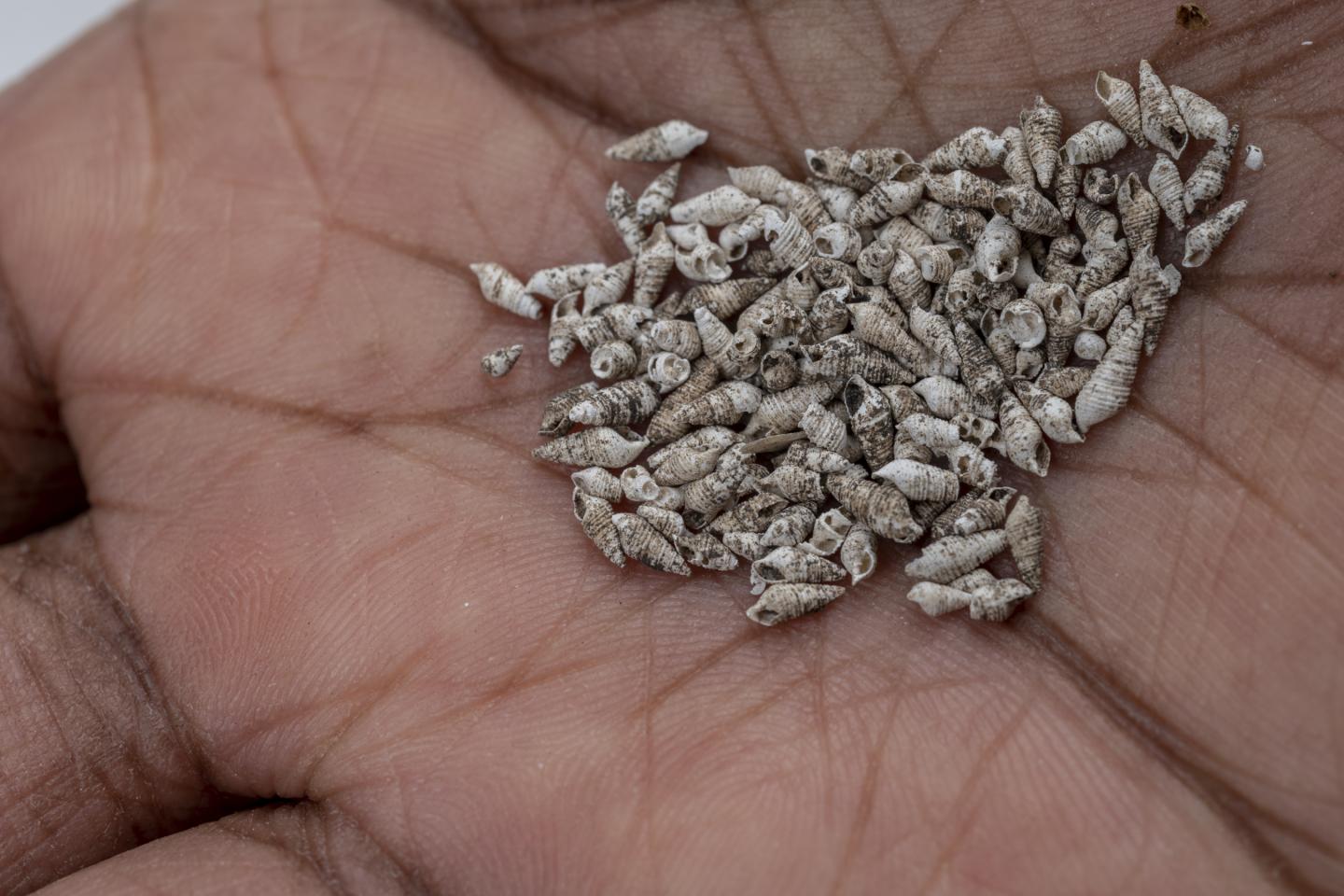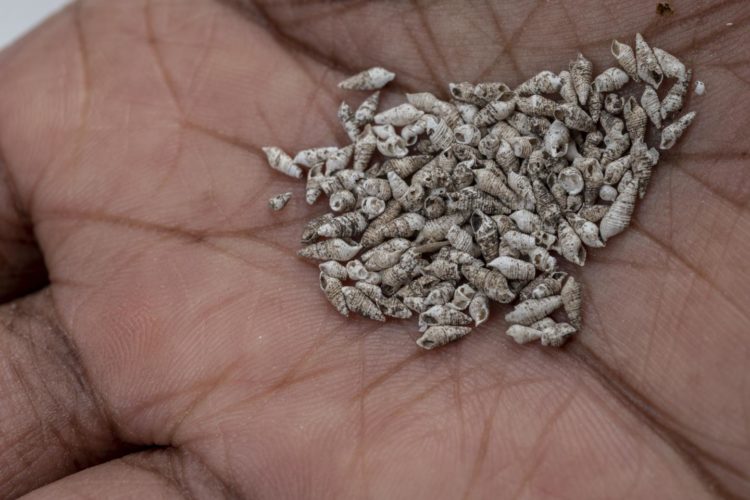
Credit: Kristen Grace/Florida Museum
GAINESVILLE, Fla. — Foodie tradition dictates only eating wild oysters in months with the letter “r” – from September to April – to avoid watery shellfish, or worse, a nasty bout of food poisoning. Now, a new study suggests people have been following this practice for at least 4,000 years.
An analysis of a large shell ring off Georgia’s coast revealed that the ancient inhabitants of St. Catherines Island limited their oyster harvest to the non-summer months.
How can scientists know when islanders were collecting oysters? By measuring parasitic snails.
Snails known as impressed odostomes, Boonea impressa, are common parasites of oysters, latching onto a shell and inserting a stylus to slurp the soft insides. Because the snail has a predictable 12-month life cycle, its length at death offers a reliable estimate of when the oyster host died, allowing Florida Museum of Natural History researchers Nicole Cannarozzi and Michal Kowalewski to use it as a tiny seasonal clock for when people collected and ate oysters in the past.
Stowaways on discarded oyster shells, the snails offer new insights into an old question about the shell rings that dot the coasts of Florida, Georgia, South Carolina and Mississippi.
“People have been debating the purpose of these shell rings for a very long time,” said Cannarozzi, the study’s lead author and Florida Museum environmental archaeology collection manager. “Were they everyday food waste heaps? Temporary communal feasting sites? Or perhaps a combination? Understanding the seasonality of the rings sheds new light on their function.”
Cannarozzi and Kowalewski, Thompson Chair of Invertebrate Paleontology, analyzed oysters and snails from a 230-foot-wide, 4,300-year-old shell ring on St. Catherines Island and compared them with live oysters and snails. They found that island inhabitants were primarily harvesting oysters during late fall, winter and spring, which also suggested the presence of people on the island tapered off during the summer.
The seasonality of the shell ring may be one of the earliest records of sustainable harvesting, Cannarozzi said. Oysters in the Southeast spawn from May to October, and avoiding oyster collection in the summer may help replenish their numbers.
“It’s important to look at how oysters have lived in their environment over time, especially because they are on the decline worldwide,” she said. “This type of data can give us good information about their ecology, how other organisms interact with them, the health of oyster populations and, on a grander scale, the health of coastal ecosystems.”
Cannarozzi said using impressed odostomes to gauge what time of year oysters were harvested offers an independent way to assess ancient patterns of oyster gathering. This approach can complement other archaeological methods, including stable isotope analysis and examining shell growth rings.
Kowalewski said the method could be applied to other marine invertebrate studies if the “timepiece” organism’s life cycle meets several key requirements.
“If you have species with a lifespan of one year or less, consistent growth patterns and predictable spawning behavior, you could potentially use them as clocks as well,” he said. “We might be able to use this type of strategy to reconstruct population dynamics or the natural history of various species, especially those that are extinct.”
Cannarozzi and Kowalewski emphasized the importance of interdisciplinary collaboration in addressing longstanding research questions in new ways. Their project combined paleontology, the study of fossils and other biological remains, with archaeology, which emphasizes human history. Cannarozzi’s specialization – environmental archaeology – also explores the close connections between humans and their natural resources.
“People have affected the distributions, life cycles and numbers of organisms over time,” Cannarozzi said. “Understanding how people in the past interacted with and influenced their environment can inform our conservation efforts today.”
###
Media Contact
Natalie van Hoose
[email protected]
352-273-1922
Original Source
https:/
Related Journal Article
http://dx.





